Spirea Japanese "Crispa": description, planting and care
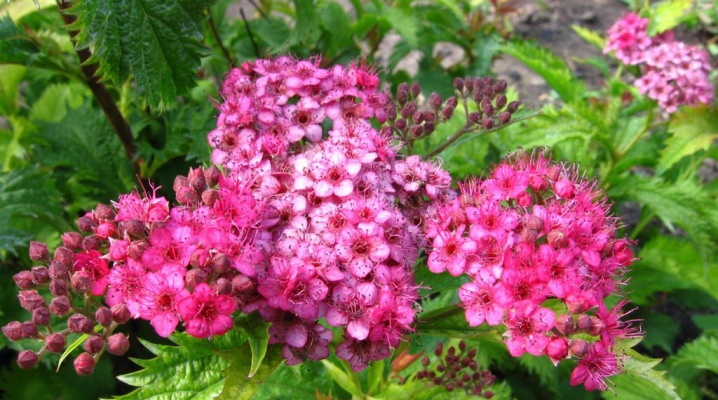
Ornamental plants are an integral part of every home plot, city parks and alleys. They make our life bright and colorful. Long-term work of breeders has led to the emergence of a huge number of different varieties of flowers, which differ in shape, size, flowering period and method of care. For self-creation of green compositions, landscape architecture experts recommend using perennial unpretentious varieties, the care of which will not cause difficulties. It is to this category that the spirea "Crispus" belongs. This plant has a spectacular appearance and bright color of inflorescences, which will help to decorate any green composition.
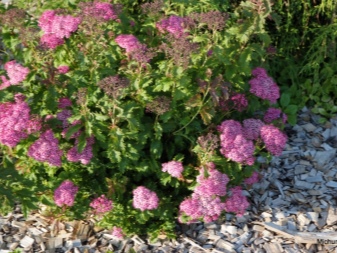
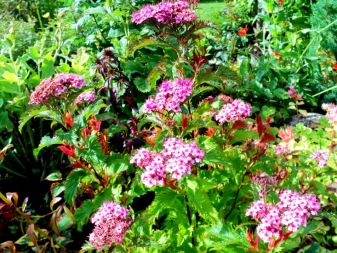
Peculiarities
Spirea Japanese "Crispa" (Crispa) is a short shrub that has a dense crown in the form of a ball and is a decorative type of Japanese spirea. This variety belongs to deciduous perennial plants and belongs to the Rosaceae family. The homeland of the flower is the territory of China, Korea and Japan. A description of this plant can be found in all collections of botany.
The height of an adult plant reaches 70 cm, and the crown diameter is 80 cm. The branches of this plant are straight, freely branching, elastic, with a large number of veins. The leaf plate has an oval shape with wavy edges. A distinctive feature of the leaves is a change in color depending on the season.
In early spring, the leaves have a reddish tint, in the summer they are painted dark green, but in the fall the bushes are covered with scarlet and orange leaves with a bronze bloom.
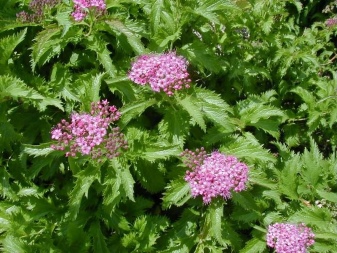
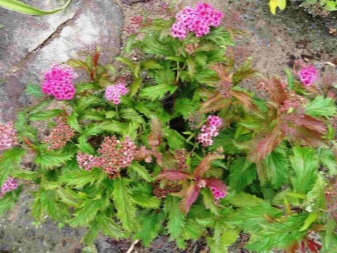
Flowers, which are painted in a pale pink shade, are collected in simple inflorescences and appear only on the shoots of the second year of life. The maximum diameter of the inflorescence is 6 cm. Flowering begins in mid-summer and lasts for 2 months.
Advantages:
- spectacular appearance;
- unpretentiousness;
- long flowering period;
- ease of care.
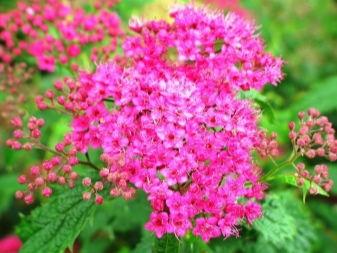
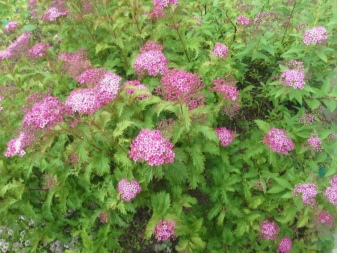
How to plant?
Competent selection of a place for a plant and planting, taking into account all requirements, is the key to obtaining a beautiful and healthy plant. Despite the unpretentiousness of this flower, experienced summer residents recommend paying special attention to planting it. The most favorable time for this event is the beginning of spring or mid-autumn, but if the acquired planting material has a closed root system, then it can be planted during the entire growing season.
The plant feels most comfortable in well-lit areas that are protected from strong currents of cold air. Experts allow planting in areas with little shade, but constant presence in the shade can negatively affect the brightness of the inflorescences and the density of the crown. An unpretentious flower feels good on all types of soil, but it is still better if the acidity of the soil is close to neutral. The plant does not feel well in swampy areas, which have a close location of groundwater to the surface.
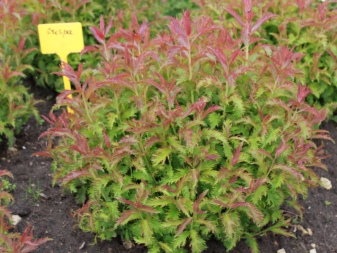
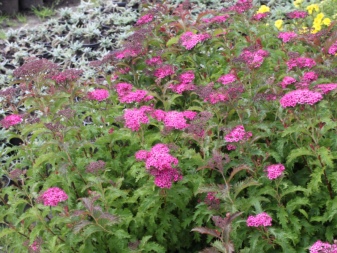
Before you start planting seedlings, you need to choose them correctly. Experienced gardeners recommend purchasing planting material in specialized nurseries that sell only high-quality goods. Most seedlings are sold in small containers. Some growers sell flowers, the root system of which is covered with a thick layer of clay, which does not allow it to dry out. Experts recommend abandoning the purchase of plants with open roots, which may become unusable and dry out during transportation.
Signs of healthy roots - the presence of long roots without mechanical damage and signs of disease.
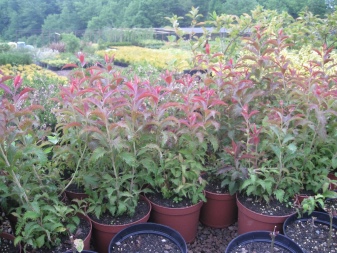

Before planting, the selected area must be carefully dug up and cleaned of foreign debris. The planting holes must necessarily be slightly larger than the root system of the seedlings. To prevent decay of horses, experts recommend putting expanded clay, small pebbles or broken brick at the bottom of the planting pit. Before removing the seedlings from the container, the soil in it must be spilled with water. When removing a flower from a container, you must try to preserve the earthen lump as much as possible. All voids in the hole during planting must be filled with nutritious soil with its simultaneous compaction. It is strictly forbidden to deeply deepen the root collar, its optimal location is at ground level. After planting, all surface greens must be cut off, and the hole must be poured abundantly with clean, settled water.
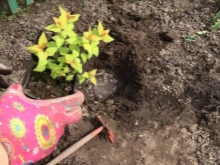
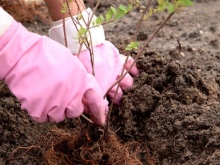
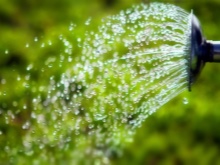
How to take care of it properly?
Due to the fact that the spirea "Crispa" is an unpretentious plant, caring for it will not cause difficulties even for novice summer residents. Under favorable climatic conditions, this flower practically does not need additional watering, but in a very dry period it is still necessary to moisten the soil. The optimal amount for one bush is 10 liters. The entire root zone must be covered with peat or chopped bark.
Like all plants, spirea needs regular feeding... In the spring, it is advisable to enrich the soil with nitrogen, in the summer flowers need potassium and phosphorus, but in the fall you need to add superphosphate. Experienced summer residents recommend purchasing a special mineral complex, a one-time application of which will provide the flower with all the necessary trace elements for the whole year.


Particular attention must be paid to pruning the spirea, which is of the following types:
- sanitary;
- stimulating;
- formative;
- anti-aging.
Regular sanitary pruning, during which it is necessary to remove all dry shoots and inflorescences, as well as deformed branches, will help give the bush a beautiful and attractive appearance.
It is advisable to carry out the first stimulating pruning 3 years after planting.
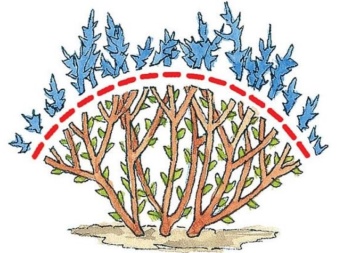
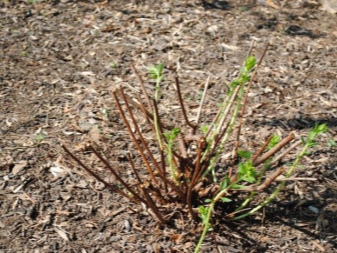
This manipulation is aimed at increasing the density and density of the crown. The technology of the procedure is to reduce the length of old shoots in early spring to 25 cm. Spring stimulating pruning will allow you to get the first flowers in early June. If you ignore the procedure, then the plant will be able to please with flowering only in July. Removing wilted inflorescences in early autumn will provoke a re-flowering of the bush in the middle of this season under favorable climatic conditions.
All actions of formative pruning are aimed at giving the plant the necessary geometric shape, depending on the aesthetic wishes of the owners. To maintain the created image, it is imperative to remove the regrown shoots throughout the season.
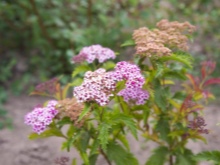
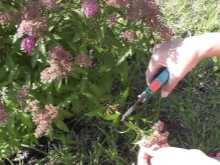
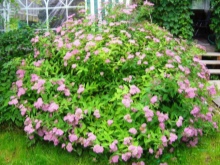
To rejuvenate old bushes, experts recommend rejuvenating pruning, which consists in the complete removal of all processes in autumn to the level of the root collar. In the spring, new shoots will appear from the remaining buds and the bush, having a strengthened root system, will completely rejuvenate.
Despite its high resistance to low temperatures and atmospheric fluctuations, experts recommend holding a number of the following events at the end of autumn:
- root zone mulching;
- creating a shelter from spruce branches or non-woven material near the plant;
- sheltering bushes with snow.

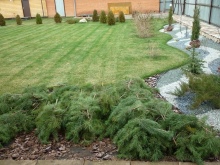
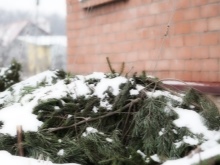
Reproduction methods
To obtain new plants, specialists recommend using the following breeding methods:
- seminal;
- cuttings;
- dividing the bush;
- with the help of bends.
The seed method is less popular and is used in most cases by professional breeders and nursery workers. If, nevertheless, there is a desire to get young plants from seeds, then first you need to collect them no earlier than 2 months after flowering. The collected planting material must necessarily be exposed to low temperatures for several months. Prepared seeds in early spring should be planted on a site with nutritious soil, spilled abundantly with water and covered with foil.
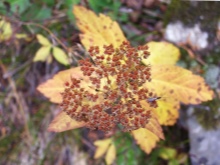
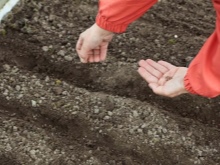
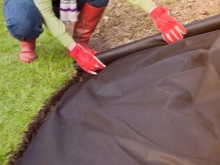
After the emergence of shoots, the covering material must be removed, and after the appearance of several real leaves, a pick should be made.
Cutting is a simple method that makes it possible to preserve all the varietal characteristics of a plant. The technology consists in the autumn cutting of cuttings. Each shoot must have at least 5 leaves, the lower ones must be removed and only the upper 2 left. Before planting, prepared petioles must be dipped into a solution for at least 30 minutes, which accelerates the formation of the root system. Only after carrying out the preparatory work can you start planting the petioles in containers with wet sand, which should subsequently be covered with plastic wrap. The optimum landing angle is 45 degrees. Only after the appearance of new leaves can the shoots be transplanted to a permanent growth site.
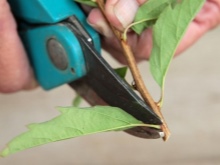
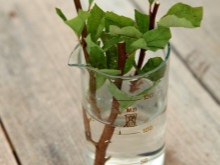
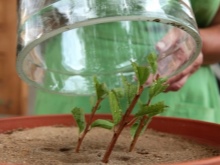
Dividing the bush is the simplest and most popular method of reproduction, which involves the complete extraction of the mother plant and the division of its root system into the required number of shoots. To prevent deformation of the root system during the extraction of a flower from the ground, experts recommend watering the plant abundantly several hours before the procedure. Sharp garden tools must be used to separate the root system. A prerequisite is the presence of strong shoots on each separated part, as well as stem and fibrous roots. All the resulting planting material must be immediately planted in a permanent place of growth.
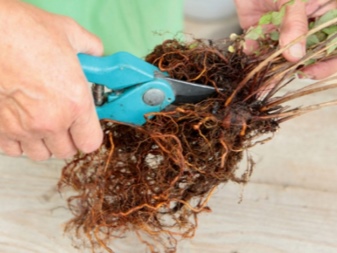

The breeding method using bends is less popular, but absolutely not complicated. To carry it out, it is necessary to press the lower processes to the surface of the earth and sprinkle them with moist soil, which must be constantly moistened throughout the season. When favorable conditions are created, the bends will quickly take root and begin to form young leaves, but do not rush to replant them. The separation of young plants must be left until next spring.
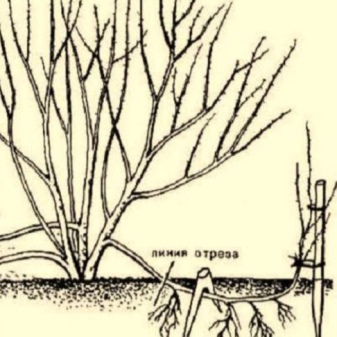
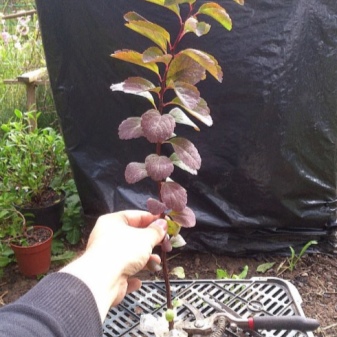
Diseases and pests
Healthy bushes of spirea "Crispa" have a high level of resistance to various diseases and very rarely suffer from the action of parasites, but green spaces, which are deprived of the attention of the owners, very often suffer from fungal diseases... This feature is caused by the thickening of the crown, the presence of a large number of dry shoots, as well as high humidity inside the bush, caused by poor air circulation.
When the first signs of the disease appear, experts recommend carrying out a thorough sanitary pruning of plants and be sure to treat it with special chemicals.
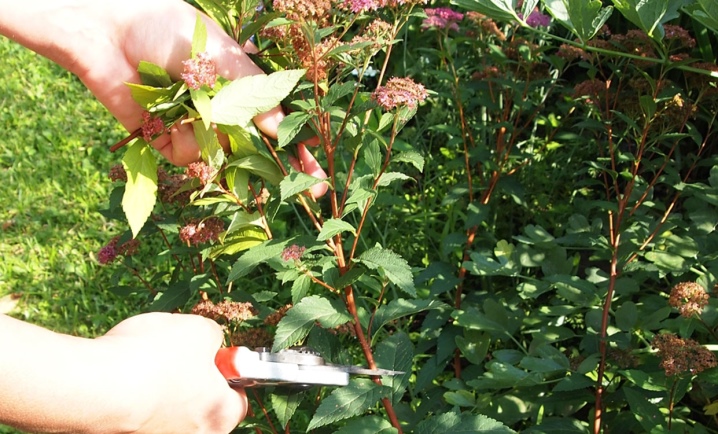
The following pests can spoil the appearance of a flower:
- aphid;
- leaf roll
- spider mite.
Conducting regular inspections will help prevent the appearance of these pests. If single insects are found, professional gardeners recommend simply manual collection of pests and damaged foliage, but to destroy a large number of insects, it is almost impossible to do without special chemicals.

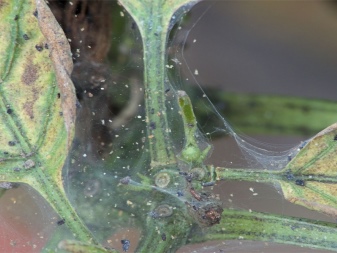
Use in landscape design
Spirea "Crispa" is a beautiful plant that is widely used by landscape designers. Due to its spherical shape and long flowering period, this culture can be both an independent plant and part of a green composition.
This plant looks very impressive as a bright accent against the background of the lush greenery of the lawn or as a central flowering element in a flower bed. Due to its unpretentiousness, this variety can be planted in large containers and, depending on the mood, change their location.
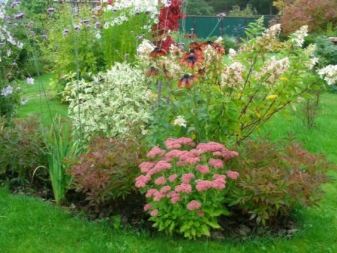
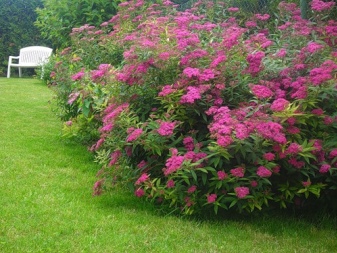
In many projects, the flower acts as a curb plant that can be planted near garden paths. Crispu is often used as an ornamental plant that allows you to zone the space and create hedges.
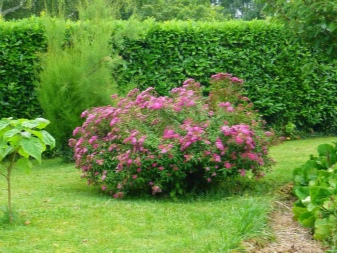
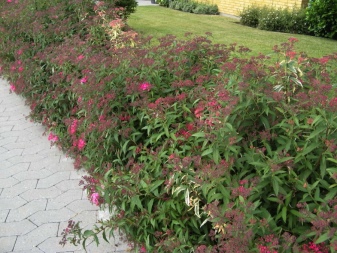
For more information on spirea, see the next video.



































































The comment was sent successfully.